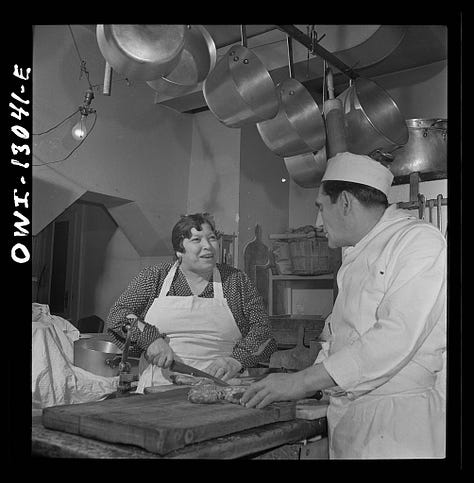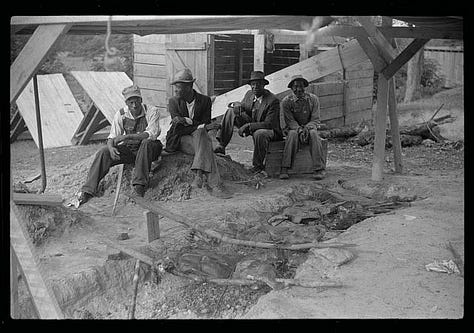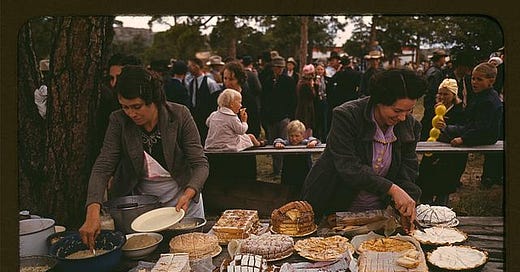The Works Progress Administration (WPA), formed from the Civil Works Emergency Relief Act of 1934, created jobs for 9 million people by employing them in the construction of thousands of infrastructure and building projects. Artists designed murals and sculptures to grace buildings and parks. Actors and musicians performed across the country. And it put thousands of writers to work writing plays, state guides and histories, and oral histories of former slaves and laborers that are still valued today.
America Eats! was one of the writers’ final projects. That final exclamation is a critical cue for the exuberance the subject was intended to arouse.
[America Eats! will be] an account of group eating as an important American institution; it is a part in development of American cookery as an authentic art and in the preservation of that art in the face of mass production of foodstuff and partly cooked foods and introduction of numerous technological devices that lessen labor of preparation but lower the quality of the product.—Katherine Amend Kellock, guardian of the project and editor-in-chief
Kellock was very specific about the kind of writers she wanted for the assignment. She forbid any writer with a cooking background including Home Economic teachers, cookbook writers and newspaper food reporters. America Eats! would not be a cookbook. Recipes, in fact, were beside the point unless they further illuminated stories. Instead, she wanted writers who knew how to draw out the personal stories behind food. They focused on community events, such as church and revival suppers, political rallies, local civic gatherings, country and state fairs, family reunions, local civic club dinners, ladies teas, even hobo encampments. In Kellock’s vision, the book would celebrate “the importance of social gatherings that glorify the non-professional cook and keep traditional cookery alive.”









[Photographs such as the above, taken by the many photographers recruited by the Farm Security Adminstration, would be a part of America Eats! They are part of the WPA archives at the Library of Congress. Photographers, top row, left to right: Russell Lee, Dorothea Lange, Marjory Collins. Middle row, left to right: Marjory Collins, Dorothea Lang, Marjory Collins. Bottom row, left to right: Russell Lee, Marion Post Wolcott, Russell Lee.]
The timing for sending writers out across the country was particularly fortunate. In the 1930s, people were still alive who could recall crossing the Great Plains as pioneers and who were a part of the great wave of immigration from Southern Italy and the Eastern Europe and Russian pogroms. The writers searched for Native Americans who remembered and preserved tribal customs and rituals. They visited long established Mexican communities in the western states and farms that were still family owned. The complexity of city life were dissected. Former slaves recalled their lives before they were freed and their children related the continuing struggles to earn meager wages.
For the first time, America Eats! told the story of how unique our food is. Inevitably America Eats! presented an indelible picture of a lively people struggling to come together as a nation by sharing food from so many different lands.



This is incredible! There was a moment almost a century ago already trying to preserve American food culture of all origins. Just the photos alone are gold let alone what you describe. 1930s diamond!
Pat, I am so glad you are featuring excerpts from America Eats! It's an important work--lively, informative, engaging--about who we were and how different we were before we started trying to be all one thing. More people need to know about it.